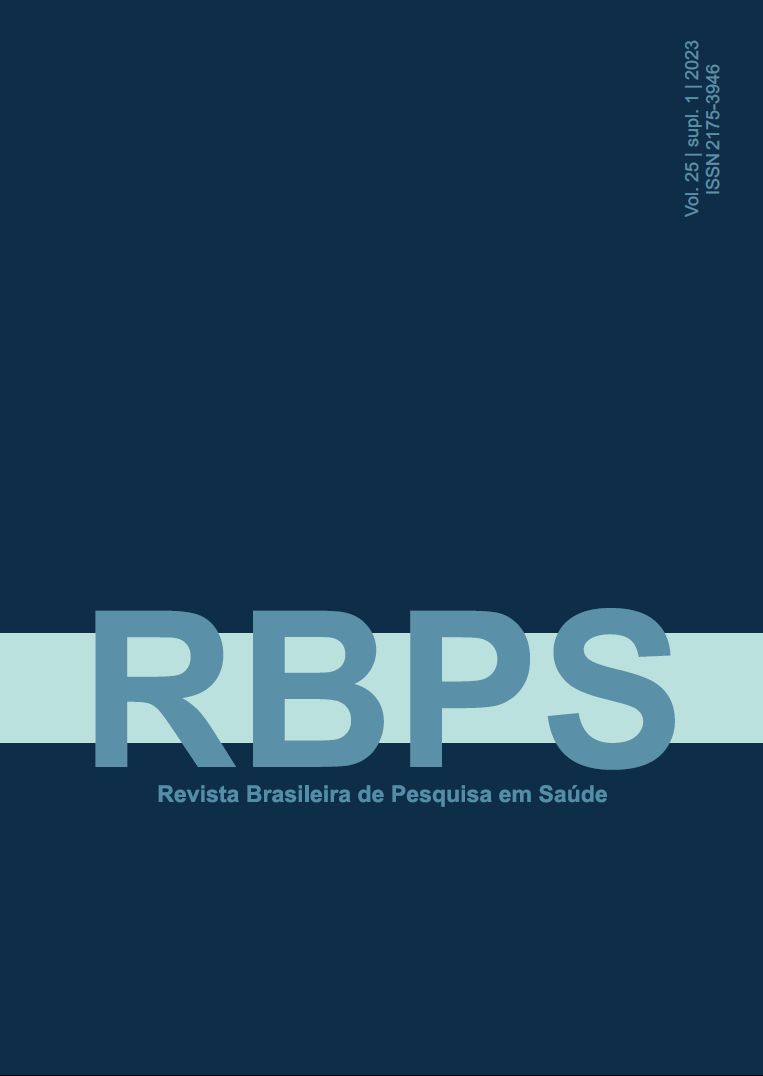Abordagem videolaparoscópica no contexto do trauma abdominal: uma revisão bibliográfica
DOI:
https://doi.org/10.47456/rbps.v25isupl_1.41051Palavras-chave:
Traumas abdominais, Videolaparoscopia, Laparotomia, CirurgiaResumo
Introdução: Trauma abdominal é definido como um sofrimento resultante de uma ação súbita e violenta, exercida contra o abdome por diversos agentes causadores: mecânicos, químicos, elétricos e irradiações. Se não for tratado desde o início, contribui para altas taxas de mortalidade e morbidade. Nesse sentido, a videolaparoscopia vem contribuindo cada vez mais para o diagnóstico e tratamento de diversos problemas cirúrgicos abdominais, introduzindo mudanças significativas na cirurgia moderna. Objetivo: Identificar na literatura científica acerca da abordagem videolaparoscópica no contexto do trauma abdominal. Métodos: Trata-se de uma pesquisa descritiva do tipo revisão integrativa de literatura. A pesquisa foi realizada por meio das bases de dados Medical Literature Analysis and Retrieval System Online (MEDLINE), Literatura Latino Americana e do Caribe em Ciências da Saúde (LILACS), na biblioteca virtual Scientific Eletronic Library Online (SciELO) e Google Acadêmico, durante os meses de novembro e dezembro de 2022. Resultados: A análise dos artigos sugere que a abordagem videolaparoscópica é um procedimento que apresenta maior acurácia na avaliação dos ferimentos penetrantes da transição tóraco-abdominal, sobretudo na detecção de lesões diafragmáticas; diminuição da morbi-mortalidade pós-operatória; diminuição do tempo de internação e pode ser utilizado em pacientes que sofreram trauma abdominal e estão hemodinamicamente estáveis e com indicação para o procedimento. Conclusão: A videolaparoscopia demonstra-se de grande valia no uso cirúrgico devido a diminuição dos riscos, sua eficácia e apoio no diagnóstico salientando a robustez e acurácia da técnica.
Downloads
Downloads
Publicado
Edição
Seção
Licença
Copyright (c) 2023 Revista Brasileira de Pesquisa em Saúde/Brazilian Journal of Health Research

Este trabalho está licenciado sob uma licença Creative Commons Attribution-NonCommercial-NoDerivatives 4.0 International License.
A Revista Brasileira de Pesquisa em Saúde (RBPS) adota a licença CC-BY-NC 4.0, o que significa que os autores mantêm os direitos autorais de seus trabalhos submetidos à revista. Os autores são responsáveis por declarar que sua contribuição é um manuscrito original, que não foi publicado anteriormente e que não está em processo de submissão em outra revista científica simultaneamente. Ao submeter o manuscrito, os autores concedem à RBPS o direito exclusivo de primeira publicação, que passará por revisão por pares.
Os autores têm autorização para firmar contratos adicionais para distribuição não exclusiva da versão publicada pela RBPS (por exemplo, em repositórios institucionais ou como capítulo de livro), desde que seja feito o devido reconhecimento de autoria e de publicação inicial pela RBPS. Além disso, os autores são incentivados a disponibilizar seu trabalho online (por exemplo, em repositórios institucionais ou em suas páginas pessoais) após a publicação inicial na revista, com a devida citação de autoria e da publicação original pela RBPS.
Assim, de acordo com a licença CC-BY-NC 4.0, os leitores têm o direito de:
- Compartilhar — copiar e redistribuir o material em qualquer suporte ou formato;
- Adaptar — remixar, transformar, e criar a partir do material.
O licenciante não pode revogar estes direitos desde que você respeite os termos da licença. De acordo com os termos seguintes:
- Atribuição — Você deve dar o crédito apropriado, prover um link para a licença e indicar se mudanças foram feitas. Você deve fazê-lo em qualquer circunstância razoável, mas de maneira alguma que sugira ao licenciante a apoiar você ou o seu uso.
- Não Comercial — Você não pode usar o material para fins comerciais.
- Sem restrições adicionais — Você não pode aplicar termos jurídicos ou medidas de caráter tecnológico que restrinjam legalmente outros de fazerem algo que a licença permita.

























